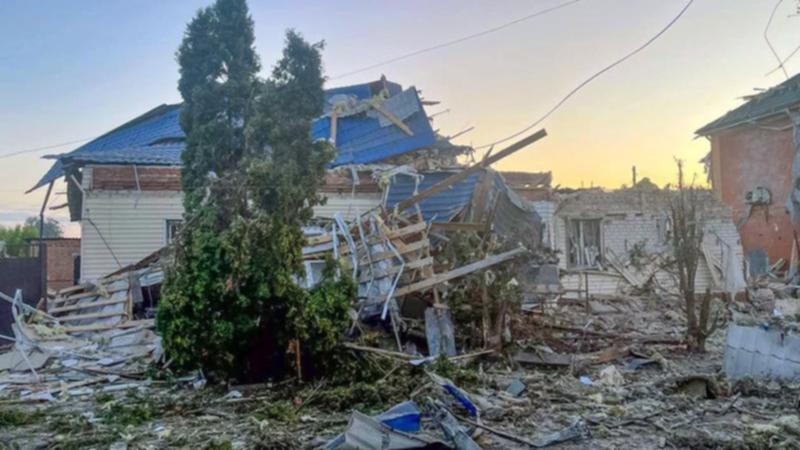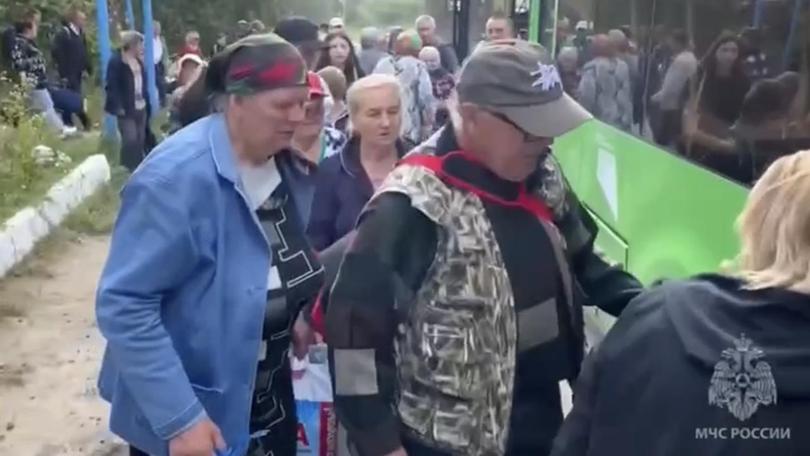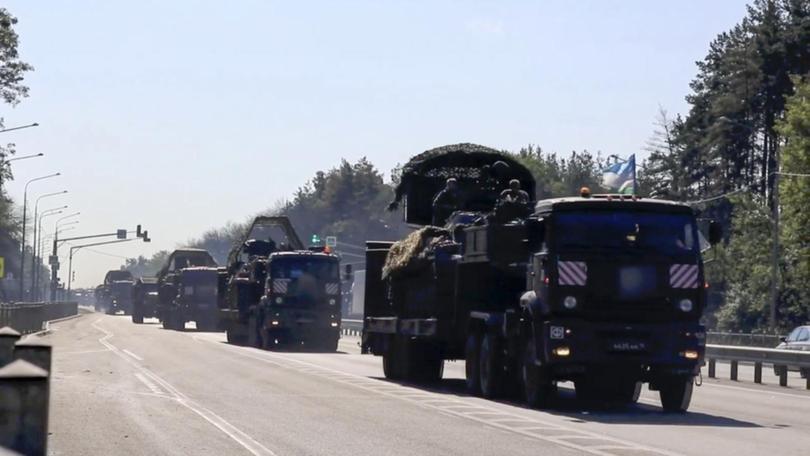THE ECONOMIST: What next after Ukraine’s shock invasion of Russia?

Ukraine’s lightning incursion into the Russian province of Kursk has exceeded the expectations of even those who planned it.
On August 12 General Oleksandr Syrsky, Ukraine’s commander-in-chief, claimed that his forces controlled roughly 1000 square kilometres of Russian territory. “Control” may be an overstatement.
But in seven days the Ukrainians have seized almost as much territory as Russia has managed, at huge cost, to take from them since the start of the year (1175 square kilometres).
Sign up to The Nightly's newsletters.
Get the first look at the digital newspaper, curated daily stories and breaking headlines delivered to your inbox.
By continuing you agree to our Terms and Privacy Policy.In the next few days the incursion will probably culminate, as troops tire and supply lines become stretched. The question is whether Ukraine can translate short-term gains into lasting strategic advantage.
The short-term gains are straightforward. Vladimir Putin has been palpably embarrassed: on August 12 he was shown on Russian state television castigating military, security and local government officials.
Ukrainian forces have taken control of the story after many months of being on the back foot, notes Konrad Muzyka, a military analyst with Rochan Consulting, a firm that tracks the war.
Ukraine has maintained tight security and has been able to surprise the enemy, much as General Syrsky’s offensive did against Russian forces in Kharkiv nearly two years ago.
Ukraine believes it has shown that far from being frozen the conflict’s frontline is fluid, potentially changing the calculus of Russia and the West in any future negotiations.
Mr Muzyka cautions that Ukraine could suffer huge losses when Russia counter-attacks. So far it has not yet mustered forces to do so.
There is still little sign of Russian resistance on the ground. Ukraine has taken a large number of prisoners, mostly callow conscripts or men from the National Guard, an internal military force. They have been quick to surrender.
The Ukrainians have faced little opposition from the pockets of civilians who have stayed behind. Tens of thousands have been evacuated, according to the governor of Kursk. Many have left of their own accord, angry at the chaotic response.

Russia’s failure to mount a rapid counter-attack puzzles some Ukrainian officers. Rather than redeploying troops from the Donbas to Kursk, the Kremlin may be planning an asymmetrical response, such as a rocket barrage against the government quarter in Kyiv.
So far Mr Putin faces no great pressure from public opinion at home: Russians are aware of the incursion, but the state-controlled media have reported on Russian forces’ supposedly successful resistance, and on the humanitarian situation.
Apart from a few articles in relatively independent news sources, news of the chaos has not reached most citizens.
Even military bloggers, who sometimes critique the army’s failures, saw the invasion of the homeland mainly as an outrage that could unite Russians in demanding vengeance. (One hoped it would wake up spoiled Muscovites “sipping [their] raspberry frappés”.)
Among Russians in the opposition or in exile, it has provoked mixed responses. Ilya Yashin, an opposition politician freed to the West in a prisoner exchange on August 2, blamed the “deaths and destruction” in Kursk on Mr Putin.
Another opposition figure, Lev Shlosberg, who is still in Russia, said anyone welcoming Ukrainian military successes should no longer consider themselves a Russian politician.

What does Ukraine do next? The advance has moved so fast, and the Russians have been so slow to respond, that Ukraine may be rethinking objectives.
The initial goals were to boost its own people’s morale and give renewed confidence to Ukraine’s Western supporters that it deserves more military backing.
Ukraine also wanted the Kremlin to divert troops from the front line, especially in the Donetsk region, where Russia is making advances along an axis between the towns of Toretsk, Pokrovsk and Chasiv Yar.
Since the incursion began, Ukraine has lost control of part of the town of Hrodivka, 15km from Pokrovsk.
Assuming the Russians start deploying more capable forces to the area, the Ukrainians will have three options, says Mick Ryan, a retired Australian general and strategist.
The maximalist approach would be to try to hold the territory it has seized—or even push further—in order to draw more Russian troops from Ukraine and provide a bargaining chip in any future negotiations.
But this is risky, Mr Ryan points out. It would be hard for Ukraine to maintain electronic warfare and air-defence coverage for even well dug-in troops across such a wide salient.
The Ukrainians know how lethal Russian glide bombs are against fixed positions. Ukraine would have to divert resources from the front line inside its own territory, and its forces’ losses in Kursk would undermine its positive story.

A second option would be to pull back to the border in good order, preserving troops and equipment for attempts to reclaim Ukrainian territory next year.
Ukraine would have shown that it can take the war to Russia and undermined the narrative of a grinding, inevitable Russian victory, which has developed traction among Ukraine’s less resolute allies.
A third option would be to withdraw partially to a more defensible position nearer the Ukrainian border which would require fewer troops and be better supported by artillery and logistics.
It would also form a base for further attacks when opportunities arise. A source in Ukraine’s general staff suggests this is the most likely option: some logistics—engineering forces, fuel, field hospitals, food and repair bases—have already been moved several kilometres inside the Russian border.
Despite initial reports that Ukraine might seek to seize the Kursk nuclear power plant or other sensitive sites, the response from its allies has been surprisingly positive.
The Biden administration, which has opposed Ukrainian drone strikes on Russian oil refineries and restricted the use of American missiles on Russian soil, said that the operation was an acceptable use of American weaponry, including Stryker armoured vehicles.
Germany, which usually worries about anything that might prompt Russian escalation, has pointed to Ukraine’s right of self-defence.
There has been little sign of allies offering private or public rebuke of Volodymyr Zelensky, Ukraine’s president. His challenge is now to translate the success of the past week into something enduring.
